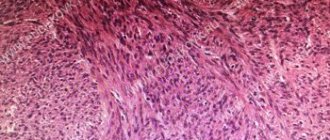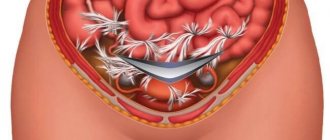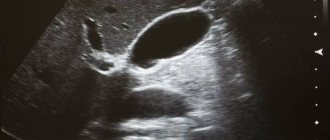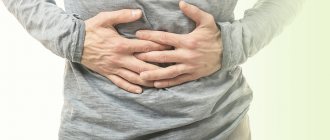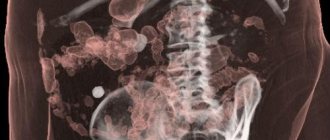General rules
Adhesive disease is a pathological condition that is associated with the formation of connective tissue between the abdominal organs and intestinal loops. This is a fairly common complication after abdominal and gynecological operations. fibrin plaque forms on the layers of the peritoneum , as a protective reaction of the body to delimit the source of inflammation in the abdominal cavity.
It glues the layers of the peritoneum together and subsequently dense adhesions - adhesions - form here. The extent of this process can vary: from widespread throughout the peritoneum to the appearance of several strands between the intestinal loops. Adhesions can occur as a result of:
- abdominal injuries (falls, knife wounds, blows);
- acute or chronic inflammatory process ( appendicitis , cholecystitis , colitis , enteritis );
- surgical intervention;
- birth by caesarean section.
If treatment for all these conditions is carried out on time and correctly, then the inflammatory process in the abdominal cavity does not lead to the formation of adhesions. The resulting adhesions can impede the function of internal organs: impaired evacuation in different parts of the intestine, prolapse of the stomach or kidney.
In this case, patients are periodically bothered by abdominal pain (acute or aching and pulling), bloating , intestinal disorders ( constipation when the large intestine is involved) and vomiting (if the process affects the small intestine). In addition, intestinal adhesions, disrupting the mobility of the loops, can lead to intestinal obstruction , which is an emergency condition and requires surgical treatment.
Prevention of this disease largely depends on medical workers: timely diagnosis of acute abdominal diseases and surgical intervention, peritoneal dialysis in cases of peritonitis , antibiotic in the presence of infection and stimulation of intestinal motility. It is for this purpose that patients after surgery are advised to engage in early physical activity - start getting up as early as possible and try to “start” intestinal motility.
There is no special therapeutic diet for this disease and we can say that the diet is aimed at alleviating the patient’s condition and preventing intestinal obstruction. It differs somewhat in different periods of the disease.
In the postoperative period, nutrition should be gentle for a week or more, depending on the extent of the operation performed. However, boiled and pureed vegetables, vegetable soups, cereals, boiled minced meat and fish, and steamed chicken dishes are included.
During the period of formation of adhesions (1-3 weeks after surgery), nutrition is already aimed at preventing the formation of adhesions. It is important to activate the digestive process and intestinal motility. The more mobile it is, the less chance of progression of the adhesive process.
During this period, the diet for adhesive intestinal disease includes plant fiber, if your condition and your doctor allow it. Fresh vegetables and fruits, cereals, whole grain flour products stimulate intestinal function and relieve constipation . The intestinal muscles begin to move, breaking the forming adhesions in the abdominal cavity. If fresh vegetables and fruits cannot be consumed due to the underlying disease, they must be administered in processed form (steamed, boiled, stewed).
Fresh vegetables and fruits, cereals, and whole grain flour products stimulate intestinal function and relieve constipation. The intestinal muscles begin to move, breaking the forming adhesions. If the underlying disease prevents you from consuming fresh vegetables and fruits, they should be introduced into the diet in processed form (steamed, boiled, stewed).
In case of chronic adhesive disease, it is already difficult to influence the process and you can only alleviate the patient’s condition. The presence of adhesions leads to a weakening of intestinal motility and a slowdown in the passage of chyme through it. This, in turn, causes not only constipation, but also activates putrefactive processes and excessive gas formation. In addition to pain, discomfort and constipation, patients are worried about flatulence , which increases the pain syndrome. Therefore, the following are excluded from the diet:
- carbonated drinks;
- legumes, peanuts, soy products;
- grapes, pears, persimmons, apples (can be baked), cherries;
- white cabbage (fresh and pickled cabbage equally cause bloating);
- corn (fresh and canned);
- fresh onions;
- radish, radish, turnip;
- black bread;
- baking from yeast dough;
- kvass, whole milk, carbonated drinks.
The components of therapeutic nutrition at this stage are cereals (buckwheat, wheat, bulgur), which improve intestinal motility, lean meat and fish, fermented milk products and vegetables that do not contain coarse fiber (potatoes, pumpkin, zucchini, peeled cucumbers). In the presence of flatulence , they should be limited or consumed in a heat-treated form, and during an exacerbation, all foods rich in fiber should be excluded from the diet.
Vegetables are used to prepare soups, stews, and cutlets. It is advisable to cook them in a double boiler or bake them. To enhance the taste, you can use dill, parsley, thyme, rosemary, and basil. Each patient determines the amount of vegetables and fruits consumed individually: it should not cause discomfort and pain, increase flatulence, on the one hand, and on the other hand, it should establish daily bowel movements if there is constipation.
General principles of nutrition for intestinal adhesions in any period of the disease:
- Small meals with a break of 3 hours and adherence to the diet. As snacks you can use cottage cheese, kefir, fruits, juices, fruit soufflé. Dry snacks (sandwiches, hot dogs, chips and other snacks) are excluded.
- Overeating or fasting, which can aggravate the manifestation of the disease, are not allowed. Eating slowly and chewing food thoroughly helps avoid flatulence.
- Compliance with the drinking regime (at least 2 liters of liquid, including juices, fruit drinks, herbal teas).
- Cooking foods by steaming or in the oven.
- Compliance with the temperature regime of the food consumed (cold or hot dishes are excluded).
Adhesive disease of the abdominal cavity
This is a condition in which internal organs and tissues grow together with strips of connective tissue (fibrous strips, or adhesions). Adhesions can be thick cords, sometimes with vessels and nerves, or they can be thin membranes. Adhesions disrupt the mobility of organs, primarily the intestines, connecting them with connective tissue “bridges.” They can occur between the loops of the small and large intestines, in the area of the liver, gallbladder, uterus and fallopian tubes, ovaries, bladder, and peritoneum.
Authorized Products
- Soups are prepared with weak meat or vegetable broth. You should prepare more vegetable soups, given that you need to get more plant fiber.
- The diet should include all vegetables and use them raw (in the absence of flatulence), boiled or stewed. It is good to add seaweed to vegetable dishes, which has a positive effect on digestion.
- Considering that meat dishes are difficult to digest, it is not advisable to consume them daily.
- You can replenish the protein composition of your diet with low-fat fish (hake, blue whiting, pollock, pike perch), since fatty fish can cause constipation. When preparing meat dishes, prefer dietary varieties (chicken, beef, turkey). Meat and fish dishes are eaten boiled or baked.
- You can prepare crumbly porridges and casseroles from cereals. Dried fruits can be added to sweet porridges.
- Fermented milk drinks are very useful for constipation and intestinal problems. Choose low-fat fermented milk products and be sure to be fresh. Three-day kefir will cause constipation. You can make kefir and yogurt at home from healthy starter cultures.
- Whole milk most often causes bloating, so it is allowed only in dishes; cottage cheese and cheeses should be consumed sparingly, as they can be strong.
- The diet should contain soaked dried fruits every day, which can be added to porridge, cottage cheese, vegetable salads or kefir.
- It is better to eat gray bread or with bran (Doctorsky). Remember that fresh bread and yeast baked goods cause bloating, so all bread products must be dried.
- You can drink weak tea, herbal teas, juices (plum, potato, carrot, beet, apricot, tomato), rosehip infusion.
Table of permitted products
| Proteins, g | Fats, g | Carbohydrates, g | Calories, kcal | |
Vegetables and greens | ||||
| zucchini | 0,6 | 0,3 | 4,6 | 24 |
| Brussels sprouts | 4,8 | 0,0 | 8,0 | 43 |
| cauliflower | 2,5 | 0,3 | 5,4 | 30 |
| carrot | 1,3 | 0,1 | 6,9 | 32 |
| beet | 1,5 | 0,1 | 8,8 | 40 |
| tomatoes | 0,6 | 0,2 | 4,2 | 20 |
| pumpkin | 1,3 | 0,3 | 7,7 | 28 |
Fruits | ||||
| apricots | 0,9 | 0,1 | 10,8 | 41 |
| watermelon | 0,6 | 0,1 | 5,8 | 25 |
| bananas | 1,5 | 0,2 | 21,8 | 95 |
| melon | 0,6 | 0,3 | 7,4 | 33 |
| nectarine | 0,9 | 0,2 | 11,8 | 48 |
| peaches | 0,9 | 0,1 | 11,3 | 46 |
| plums | 0,8 | 0,3 | 9,6 | 42 |
| apples | 0,4 | 0,4 | 9,8 | 47 |
Nuts and dried fruits | ||||
| dried figs | 3,1 | 0,8 | 57,9 | 257 |
| dried apricots | 5,2 | 0,3 | 51,0 | 215 |
| dried apricots | 5,0 | 0,4 | 50,6 | 213 |
| prunes | 2,3 | 0,7 | 57,5 | 231 |
Cereals and porridges | ||||
| buckwheat (kernel) | 12,6 | 3,3 | 62,1 | 313 |
| oat groats | 12,3 | 6,1 | 59,5 | 342 |
| pearl barley | 9,3 | 1,1 | 73,7 | 320 |
| barley grits | 10,4 | 1,3 | 66,3 | 324 |
Bakery products | ||||
| wheat bread | 8,1 | 1,0 | 48,8 | 242 |
Confectionery | ||||
| jam | 0,3 | 0,2 | 63,0 | 263 |
| marshmallows | 0,8 | 0,0 | 78,5 | 304 |
| fruit and berry marmalade | 0,4 | 0,0 | 76,6 | 293 |
| paste | 0,5 | 0,0 | 80,8 | 310 |
| Maria cookies | 8,7 | 8,8 | 70,9 | 400 |
| oatmeal cookies | 6,5 | 14,4 | 71,8 | 437 |
Raw materials and seasonings | ||||
| honey | 0,8 | 0,0 | 81,5 | 329 |
| sugar | 0,0 | 0,0 | 99,7 | 398 |
Dairy | ||||
| kefir | 3,4 | 2,0 | 4,7 | 51 |
| sour cream | 2,8 | 20,0 | 3,2 | 206 |
| curdled milk | 2,9 | 2,5 | 4,1 | 53 |
| acidophilus | 2,8 | 3,2 | 3,8 | 57 |
| yogurt | 4,3 | 2,0 | 6,2 | 60 |
Cheeses and cottage cheese | ||||
| cottage cheese | 17,2 | 5,0 | 1,8 | 121 |
Meat products | ||||
| beef | 18,9 | 19,4 | 0,0 | 187 |
| beef liver | 17,4 | 3,1 | 0,0 | 98 |
| beef tongue | 13,6 | 12,1 | 0,0 | 163 |
| veal | 19,7 | 1,2 | 0,0 | 90 |
| rabbit | 21,0 | 8,0 | 0,0 | 156 |
Bird | ||||
| chicken | 16,0 | 14,0 | 0,0 | 190 |
| turkey | 19,2 | 0,7 | 0,0 | 84 |
Eggs | ||||
| chicken eggs | 12,7 | 10,9 | 0,7 | 157 |
Oils and fats | ||||
| butter | 0,5 | 82,5 | 0,8 | 748 |
| corn oil | 0,0 | 99,9 | 0,0 | 899 |
| olive oil | 0,0 | 99,8 | 0,0 | 898 |
| sunflower oil | 0,0 | 99,9 | 0,0 | 899 |
Non-alcoholic drinks | ||||
| instant chicory | 0,1 | 0,0 | 2,8 | 11 |
Juices and compotes | ||||
| apricot juice | 0,9 | 0,1 | 9,0 | 38 |
| carrot juice | 1,1 | 0,1 | 6,4 | 28 |
| plum juice | 0,8 | 0,0 | 9,6 | 39 |
| tomato juice | 1,1 | 0,2 | 3,8 | 21 |
| pumpkin juice | 0,0 | 0,0 | 9,0 | 38 |
| rose hip juice | 0,1 | 0,0 | 17,6 | 70 |
| * data is per 100 g of product | ||||
Symptoms of the disease
Most often, adhesions do not occur suddenly, but gradually. Therefore, the symptoms of the disease may not be felt immediately or may not be felt at all. Sometimes the patient does not know about the presence of an adhesive process in his body, and discovers it only after examination. This leads to the fact that the disease is in an extremely advanced stage at the time of contacting a doctor.
Table: adhesive disease, forms of its occurrence and symptoms.
| Uncomplicated form of the disease, symptoms | Complicated form of the disease, symptoms |
| Nagging pain in the area of the postoperative scar. The pain intensifies with physical activity, for example, when turning the body at a certain angle. | Acute intestinal obstruction. The intestinal tube, compressed by adhesions, does not allow the intestinal contents to move forward. This process is accompanied by acute pain, prolonged absence of stool, and gas formation. A decrease in blood pressure may occur. |
| Digestive problems: bloating, flatulence, feeling of fullness. | Intestinal necrosis. Adhesions compress blood vessels in the intestine, which leads to necrosis of its individual fragments. |
| Difficulty in defecation. The presence of adhesions makes it difficult for the intestinal contents to pass through, causing constipation. | |
| After eating, nausea and vomiting occur. |
If you feel acute pain in the intestinal area, accompanied by prolonged constipation or gas formation, you should immediately call an ambulance. If you notice these symptoms, you should consult a doctor.
Fully or partially limited products
- You should not eat rye bread, yeast and puff pastries. Chocolate, fatty cookies, products with cream, cakes and pastries, which increase constipation, are not allowed.
- Jelly made from bird cherry, quince, blueberry, pear, dogwood, strong tea, cocoa, coffee, as they contain tannins.
- Difficult to digest fatty meats, poultry and fish, canned food, fried foods, smoked foods, hard-boiled eggs are excluded - all this causes constipation.
- Dishes with a viscous consistency (mucoid soups, mashed potatoes, jelly, jelly, pureed porridge), as they slow down intestinal motility.
- Legumes, grapes, pears, cherries, white cabbage (fresh and pickled cabbage equally cause bloating), corn (fresh and canned), fresh onions, radishes, turnips.
- Hot sauces, horseradish, adjika, mustard, mushrooms, rice, noodles, sago, semolina, noodles should be limited.
- Kvass, carbonated drinks.
Table of prohibited products
| Proteins, g | Fats, g | Carbohydrates, g | Calories, kcal | |
Vegetables and greens | ||||
| sauerkraut | 1,8 | 0,1 | 4,4 | 19 |
| corn | 3,5 | 2,8 | 15,6 | 101 |
| bulb onions | 1,4 | 0,0 | 10,4 | 41 |
| pickles | 0,8 | 0,1 | 1,7 | 11 |
| radish | 1,2 | 0,1 | 3,4 | 19 |
| white radish | 1,4 | 0,0 | 4,1 | 21 |
| turnip | 1,5 | 0,1 | 6,2 | 30 |
| horseradish | 3,2 | 0,4 | 10,5 | 56 |
| garlic | 6,5 | 0,5 | 29,9 | 143 |
Fruits | ||||
| quince | 0,6 | 0,5 | 9,8 | 40 |
| cherry | 0,8 | 0,5 | 11,3 | 52 |
| pears | 0,4 | 0,3 | 10,9 | 42 |
| dogwood | 1,0 | 0,0 | 10,5 | 44 |
| persimmon | 0,5 | 0,3 | 15,3 | 66 |
| apples | 0,4 | 0,4 | 9,8 | 47 |
Berries | ||||
| grape | 0,6 | 0,2 | 16,8 | 65 |
| blueberry | 1,1 | 0,4 | 7,6 | 44 |
Mushrooms | ||||
| mushrooms | 3,5 | 2,0 | 2,5 | 30 |
Cereals and porridges | ||||
| semolina | 10,3 | 1,0 | 73,3 | 328 |
| corn grits | 8,3 | 1,2 | 75,0 | 337 |
| millet cereal | 11,5 | 3,3 | 69,3 | 348 |
| rice | 6,7 | 0,7 | 78,9 | 344 |
| sago | 1,0 | 0,7 | 85,0 | 350 |
Flour and pasta | ||||
| pasta | 10,4 | 1,1 | 69,7 | 337 |
| noodles | 12,0 | 3,7 | 60,1 | 322 |
Bakery products | ||||
| Rye bread | 6,6 | 1,2 | 34,2 | 165 |
Confectionery | ||||
| pastry cream | 0,2 | 26,0 | 16,5 | 300 |
Chocolate | ||||
| chocolate | 5,4 | 35,3 | 56,5 | 544 |
Raw materials and seasonings | ||||
| mustard | 5,7 | 6,4 | 22,0 | 162 |
| mayonnaise | 2,4 | 67,0 | 3,9 | 627 |
Meat products | ||||
| pork | 16,0 | 21,6 | 0,0 | 259 |
| salo | 2,4 | 89,0 | 0,0 | 797 |
Sausages | ||||
| dry-cured sausage | 24,1 | 38,3 | 1,0 | 455 |
Bird | ||||
| smoked chicken | 27,5 | 8,2 | 0,0 | 184 |
| duck | 16,5 | 61,2 | 0,0 | 346 |
| smoked duck | 19,0 | 28,4 | 0,0 | 337 |
| goose | 16,1 | 33,3 | 0,0 | 364 |
Fish and seafood | ||||
| smoked fish | 26,8 | 9,9 | 0,0 | 196 |
| canned fish | 17,5 | 2,0 | 0,0 | 88 |
Oils and fats | ||||
| animal fat | 0,0 | 99,7 | 0,0 | 897 |
| cooking fat | 0,0 | 99,7 | 0,0 | 897 |
Non-alcoholic drinks | ||||
| mineral water | 0,0 | 0,0 | 0,0 | — |
| instant coffee dry | 15,0 | 3,5 | 0,0 | 94 |
| black tea | 20,0 | 5,1 | 6,9 | 152 |
Juices and compotes | ||||
| jelly | 0,2 | 0,0 | 16,7 | 68 |
| * data is per 100 g of product | ||||
Diagnosis of adhesions
The primary diagnostic method is examination of the patient. The doctor examines the rectum with his finger and finds out whether there has been previous surgery.
The following methods for diagnosing the disease are used:
- Ultrasound examination
. Helps visually identify the presence of adhesions in internal organs, including the peritoneum. - X-ray with barium salt
. The patient drinks a solution of a contrast agent (barium sulfate) on an empty stomach. By tracking the movement of the solution through the intestines in the photographs, the degree of the adhesive process can be determined. With partial passability, the substance slows down, with complete obstruction, it stops in the obstacle zone. - Diagnostic laparoscopy
. It is carried out by examining the affected area using a special tube with a camera, which is inserted into the patient’s body through a small puncture.
Menu for intestinal adhesions (Diet regimen)
In this condition, fractional nutrition in small portions is indicated, since it is impossible to prevent overeating and overload the digestive organs. During the day you need to have several snacks and six meals a day is more suitable. Depending on the condition and tolerance of vegetables, their quantity may increase or decrease during the day. The same applies to eating them raw or boiled (in this form they do not cause bloating).
You can always choose well-tolerated vegetables, fruits, dried fruits and cereals for yourself and create a diet based on this. During the week, try to eat more fish dishes than meat dishes. Typically, cottage cheese, soft-boiled eggs and fermented milk products are well tolerated by patients and they should supplement the diet. Below is a sample menu for several days.
| Breakfast |
|
| Lunch |
|
| Dinner |
|
| Afternoon snack |
|
| Dinner |
|
| For the night |
|
| Breakfast |
|
| Lunch |
|
| Dinner |
|
| Afternoon snack |
|
| Dinner |
|
| For the night |
|
| Breakfast |
|
| Lunch |
|
| Dinner |
|
| Afternoon snack |
|
| Dinner |
|
| For the night |
|
Diet for adhesive disease
Research has not found that nutrition, diet, or any specific nutrients play a role in preventing adhesions. If partial intestinal obstruction is diagnosed, it makes sense to increase fluid intake and eat less fiber. It is best to obtain such nutritional recommendations from your doctor.
Photo: evgeniasheidt / freepik.com
Reviews and results
According to patients' reviews, many years of experience in nutrition during adhesive disease allowed them to choose foods that do not cause exacerbation. A proper diet can improve bowel movements and help avoid bloating and pain. Many have rated its effectiveness and the reviews are generally positive. It is important to eat regularly and not overload the gastrointestinal tract with an abundance of difficult-to-digest foods.
- “... After appendicitis there was peritonitis, and after 10 years the adhesions suddenly showed themselves. It always gets worse after physical activity and if there is no regular bowel movement. Conclusion - do not overexert yourself physically and do not become constipated. For me, the most important medicine is grated boiled beets with olive oil. I eat it three times a day, 2-3 tbsp. l. before every meal. Baked apples are also good. Diarrhea should not be allowed, since after this the condition will also worsen. Moderation in food is also important. I don’t eat anything spicy or fatty or anything that causes bloating. Such simple rules help maintain a normal state”;
- “... Adhesions appeared after an abdominal injury and forced surgery. I never overeat, I keep a routine. My diet contains little sweets, dough and fatty foods; if I do eat these, I always take Mezim. I eat vegetables and fruits without peeling, and have almost switched to seafood. I do breathing exercises, walk or swim a lot, and do hoops. In this way, I keep myself in a normal state”;
- “...I know this condition. Over the course of 6 years, she underwent 7 operations, and was in the department several times a year with exacerbations. I suffered from pain, gas began to accumulate, and constipation appeared. I couldn’t even eat an apple, not to mention cabbage, salads and radishes. Of course, I have to exclude all this, and I only eat boiled vegetables. My health improved, but I began to feel great after the sanatorium treatment (mud with electrophoresis, mineral water, nutrition, etc.). I’ve been traveling for three years in a row, and I haven’t been to the hospital, I’m in excellent condition.”
Treatment of adhesive disease
If adhesions do not appear and do not cause any symptoms, then treatment is not necessary.
Surgery is the only effective treatment method. Indications:
- pain syndrome;
- infertility;
- intestinal obstruction; in case of complete intestinal obstruction, surgery is mandatory; in case of partial intestinal obstruction, conservative methods can help.
However, repeated surgery significantly increases the risk of new adhesions forming.
Treatment of adhesive disease with folk remedies
Traditional methods have not been studied in large clinical studies. Thus, their effectiveness has not been confirmed, but also not refuted.


